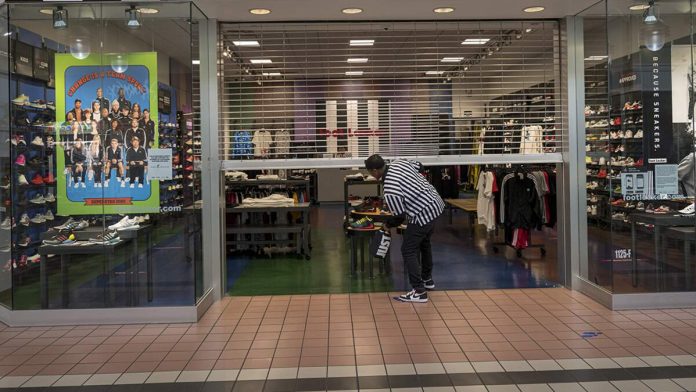The end of the year is around the corner and 2024 has been a rough one for many retailers. Walgreens, TGI Fridays, Sears, CVS, GameStop, Pizza Hut, Boston Market, Best Buy, Applebee’s, Walmart, Red Lobster, Pizza Hut and plenty of others have shuttered locations during the past 11 months, and it looks like next year won’t be any different. One of the nation’s largest footwear chains will be closing stores throughout 2025.
Foot Locker, which already shut down dozens of locations this year, will continue to do so next year and by 2026, will have shuttered 400 locations that are underperforming. Among the stores that will close are 275 Foot Lockers across the country as well as 125 Champs Sports, which Foot Locker also owns. In a call to analysts earlier this year, company executives called the strategy a “reset” that comes after their total sales for this year were lower than last year.
The closures would reduce Foot Locker’s global store count by 10%, leaving them with 2,400 locations worldwide, but they still plan to grow. Senior Vice President of Store Development Anthony Aversa stated, “We will increase our square footage by 10% to over 14.5 million square feet as we open up larger, more experiential expressions of our brands with a wider product assortment. New formats will surpass 400 locations.”
In addition, the retailer plans to introduce more “experiential” store concepts that they hope attract younger shoppers. Among the new strategies is one called the “Lace Up,” which focuses on categories of different types of sneaker shoppers. Among those groups that the company created are “fashion-forward expressionists,” who want their sneakers to make them look and feel cool, “sneaker mavens,” who represent themselves through their shoes, “athletes,” who are seeking high-performance sneakers, then there are shoppers who want quality and comfort in their shoes, and deal hunters.
As for which Foot Locker and Champs Sports stores will be closing next year, that isn’t yet known, but they will be split between smaller regional malls and larger but lower-performing malls.

Recent Comments